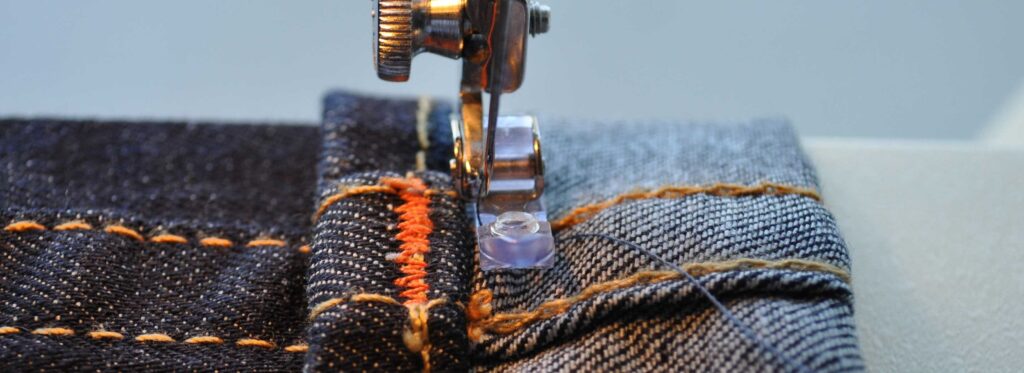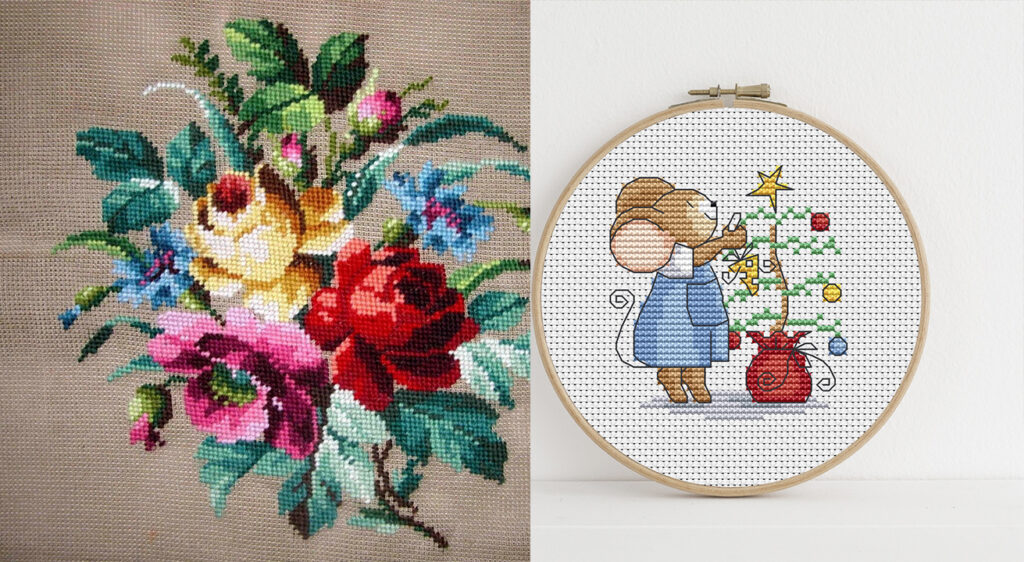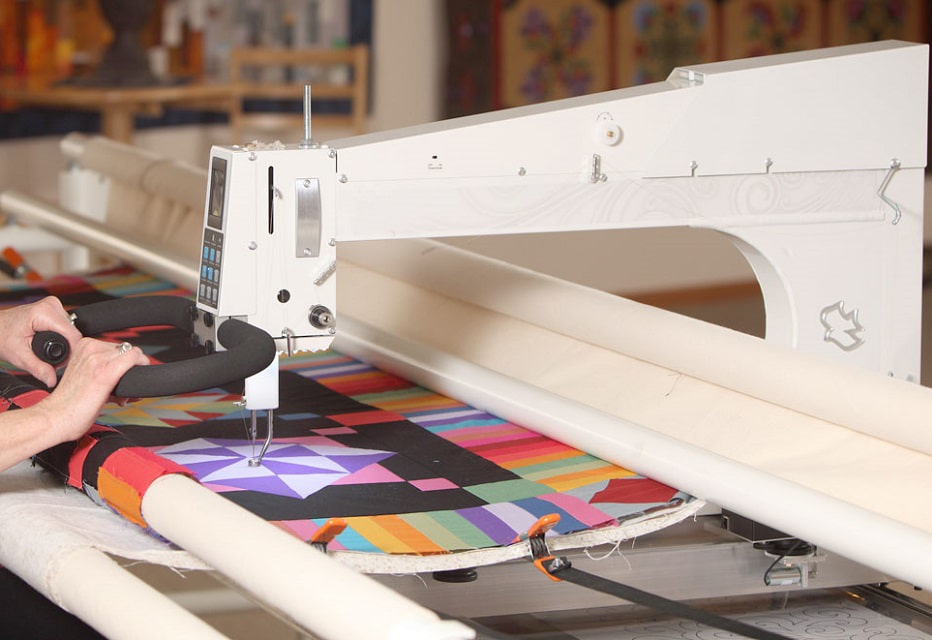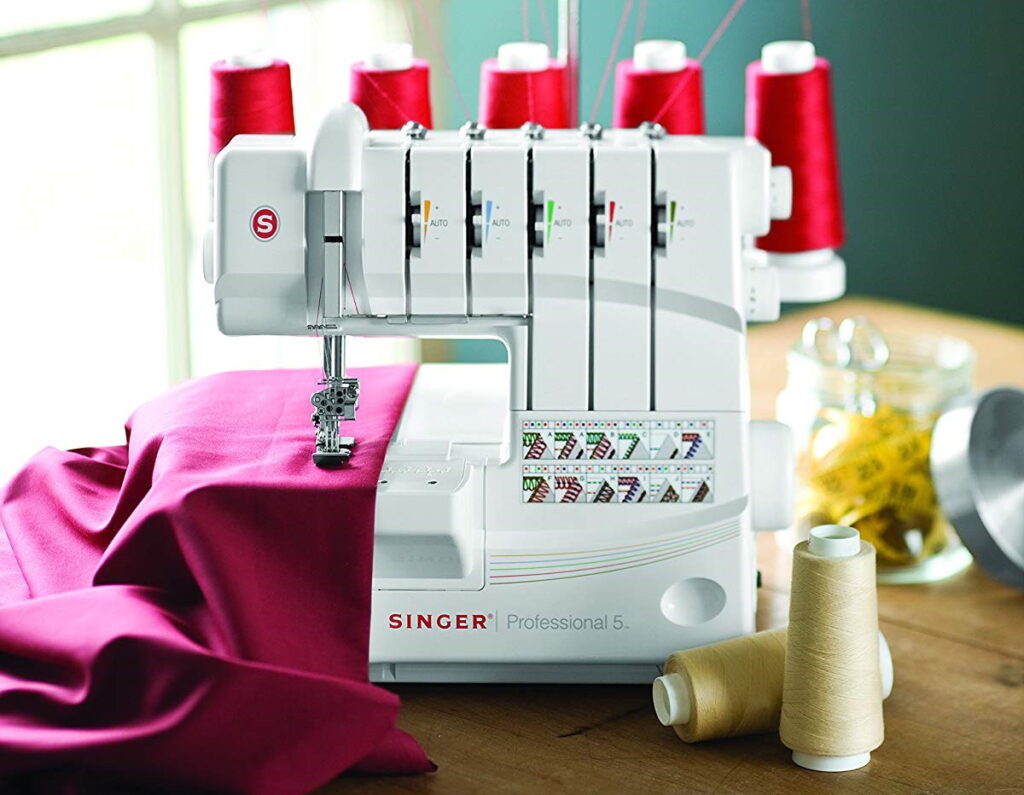People who enjoy crafty projects always have a creative mind. However, it can be a little overwhelming to decide where and how to invest your creative energy. It is always best to start with simple and easy stitching techniques and moving on to more complicated ones once you have a practiced hand. This is why most beginners remain confused regarding what to choose: cross-stitch vs embroidery?
Both of these are common stitching techniques; however, embroidery is comparatively easier as compared to cross stitching. Cross stitch is probably more complicated since it is a type of hand stitching, while embroidery can be done using specific kinds of sewing machines. Embroidery is generally an umbrella term used for various types of designs and patterns of stitching, while cross stitch is an x-shaped stitch most commonly used for bordering.
The following guide will help you understand the difference between embroidery and cross stitch. Continue reading to find out what is best for you and know the difference between cross stitch and embroidery.
Embroidery is a stitching technique used to embellish fabric with decorative patterns and designs. There are two types of embroidery, one that is performed with a free hand, without counting stitches and the other type is machine embroidery that is done using a sewing machine. Embroidery can be done using several materials, like beads, pearls, yarn, sequin and even colorful threads.
This is the most common type of embroidery, which is done using a thread and a needle, with other items, like sequin, beads and buttons as well. This is a kind of needle work that is performed on top of a fabric with free hand stitching. You can incorporate several kinds of stitches for hand embroidery and follow a simple or complicated design of your choice.
Blending colors or painting is a common hand embroidery technique, where you mix colored threads for shading patterns. This type of embroidery allows you to work with several kinds of fabrics and stitch a variety of designs without restriction, allowing you to add a personal touch in your crafts. With this feature of personal design and fabric preferences, hand embroidery allows you greater creative freedom to create and experiment with unique elements and patterns.
However, one drawback of hand embroidery can be the slight inconvenience it comes with. It takes longer to finish projects, as compared to time-saving embroidery machines, along with the time it takes to perfect one’s stitching by constant practicing.
You can make use of embroidery hoops for quick learning because they help you follow the design more neatly, limiting the amount of mess. Hand embroidery doesn’t always mean free hand stitching of patterns because you can draw up a pattern using a fabric crayon, secure the fabric in a stitching hoop and neatly stitch your favorite pattern easily.
There are some excellent hand embroidery kits that you can get, such as the Akacraft DIY Embroidery Starter Kit that comes with several supplies, including multicolored soft cotton threads, washable fabric ink and a design book with easy to follow patterns.
Machine embroidery is most commonly used by professionals and commercial producers for mass production. This technique uses machines to embellish patterns on a limited number of fabrics that are compatible with the machine you’re using. However, embroidery machines are not just used commercially, they can be purchased by domestic crafters as well.
You can buy a machine that is specifically for embroidery, or a sewing machine that has embroidery features. You can use a reliable embroidery machine for designing several items, like dresses, cushion covers, tote bags and much more.
The best thing about machine embroidery is the options available in the market, where you can buy a machine that allows manual designing, as well as zigzag sewing patterns to embellish fabrics.
Some machines allow pattern controlling through link stitch options and computerized functions for easy and quick stitching. Beginners may find it difficult to use professional machines for embroidery; however the good news is that you can also buy embroidery machines that are easy to use and suitable for beginners!
Embroidery machines allow you to stitch over synthetic fabrics, like polyester, as well as tough ones, like wool and quilting cotton, but you need to make sure the machine you get is compatible with the thread count of the fabric you intend to embroider.
If you are looking to buy a new embroidery machine, you may want to consider the Brother SE1900 Sewing and Embroidery Machine, which is easy to use and comes with 139 built-in stitches.
However, machine embroidery can be a considerably more expensive option compared to hand embroidery. It also allows lesser creative freedom to stitch the design of your choice, using materials that you wish to use.
Most people confuse cross stitch Trusted Source Cross-stitch - Wikipedia Cross-stitch is a form of sewing and a popular form of counted-thread embroidery in which X-shaped stitches in a tiled, raster-like pattern are used to form a picture. en.wikipedia.org with embroidery because it is essentially a type of embroidery work, however it requires counted needlework, which differentiates it from regular types of embroidery.
The most commonly seen and done cross stitch is an X shaped stitch on divided squares of a fabric that form a pattern when combined. This requires creative patterns that use several small X’s stitched together in squares of fabric that result in flat patterns, as opposed to pop up and dimensional patterns that emerge from embroidery.
It is an exciting technique that can be used to make color gradients and blended color patterns by using different shaded threads side by side. There are two major types of cross stitches we will discuss here.
If you’d like to know more about how to cross-stitch, check out this handy video tutorial.
The most common misconception people have regarding cross stitching is that there is only one way to do it and that it only uses small x shaped stitches to design patterns. Even though small x’s are the staple of cross stitching, there are two different types of cross stitches that we will identify below.
Cross stitching can be a tricky style of stitching, especially when you are trying to achieve complicated and intricate designs. The stamped cross stitch technique helps you make this process a little easier to follow. It involves stamping or printing the intended pattern onto the fabric. This achieves a blueprint of what you want to cross stitch, serving as a guide that you can follow while stitching to avoid mess ups.
You can use the colors of your choice to incorporate creative color gradients within the pattern while stitching. The pattern is printed onto the fabric using washable fabric ink, so once you are done cross stitching over the print, the ink can be easily removed by washing. You can buy the supplies for stamped cross stitching separately, or save time by getting a stamped cross stitch kit designed for such projects.
These kits come with the supplies and a simple to follow instructions guide that are great for beginners.
Counted cross stitch technique is pretty self-explanatory, since it means literally what the name implies. You begin at the center of the fabric and count the number of stitches outward till you reach the end of the pattern.
Unlike stamped cross stitching, you start with a blank fabric, however when you start following the pattern according to your intended design, you get just as beautiful a pattern in the end. Some embroiderers prefer using cross stitch charts when following a counted cross stitch technique because it helps you use colored grids to count the stitches before working the fabric.
This chart acts like a map of sorts, which you follow and end up with the desired design. Counting manually or using a color grid depends on personal preference because both ways get you the same result. You can get cross stitching kits for easier and quicker stitching because they save you from shopping for each supply separately.
There are some excellent cross stitching kits that are great for beginners as well, such as the Caydo 3 Sets Embroidery Starter Kit that comes with embroidery fabric, with floral patterns, as well as 3 embroidery hoops and colored threads.
The question whether embroidery or cross stitch is better usually comes from beginners, who are overwhelmed by the variety of options they are presented with as soon as they step into the world of stitching and crafting.
If by better you mean easier, then the answer is cross stitch. Cross stitch is an easier and simpler way to start and get acquainted to using a needle and thread before you delve into the more complex patterns and techniques of embroidery. As you learn how to handle a basic cross stitch, you can move onto learning how to stitch using elements like beads, sequin and other materials.
It should be noted that everyone is different and the brains are wired differently, so some people may find basic embroidery easier than perfecting a cross stitch, therefore we recommend trying out both techniques to see which one is more suited to you.
However, if you are a pro at stitching, you may employ both embroidery and cross stitch as you go, and switch between techniques on different projects.
When it comes to embroidery specifically, it is better to learn hand embroidery first. Using a machine can also get tricky and may take some getting used to before you can breeze your way through an embroidery or sewing machine.
The best thing about embroidery is that you require less supplies to create an amazing pattern, rather than investing in an abundance of items only to end up with a tacky end product.
We always suggest keeping it simple at first. By practicing on simpler designs, you can get the hang of handling a needle and a thread, which will help you graduate onto more complex embroidery projects.
The second most important tip is to always use a stitching hoop to avoid unforeseen problems and getting confused mid stitching. Experts suggest getting a trusty embroidery kit that comes with a detailed instructions manual and easy to follow designs for beginners because they are cost effective and help you learn faster.
You can also start by learning the basic cross and back stitches first.
The main reason why creators may prefer a certain technique over the other is due to the requirements of the project they are working on and the vision of the final product they have in mind. Cross stitch can be an excellent technique to border your crafts or create flat patterns, while embroidery may be more suitable for adding some bling with sequin and beads. To get a pop up and three-dimensional pattern, you may want to go with embroidery.
Now that you know the difference between embroidery and cross stitch, the main choice of embroidery vs. cross stitch owes to the question of convenience and preference.
We personally like and recommend using both embroidery and cross stitch techniques, however make sure you’re not using them interchangeably because that will result in a mess you don’t want.
We hope you found this guide useful and feel free to share your thoughts and unique stitching tips with us!





